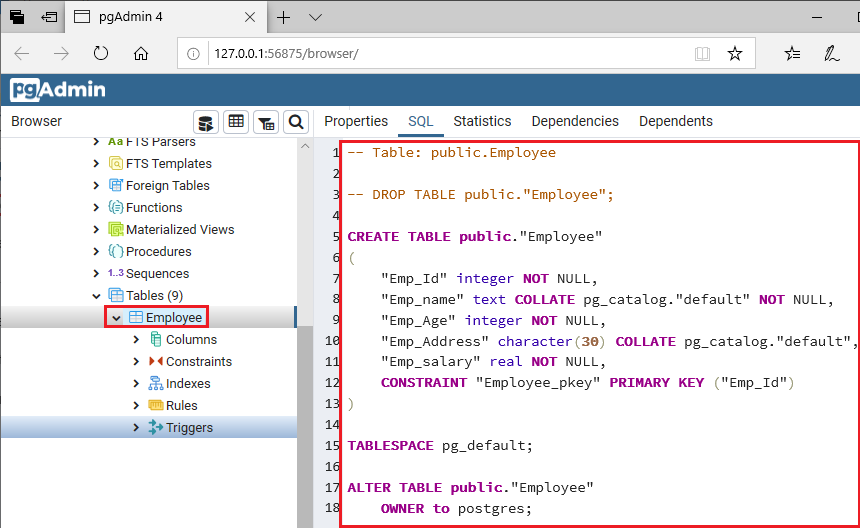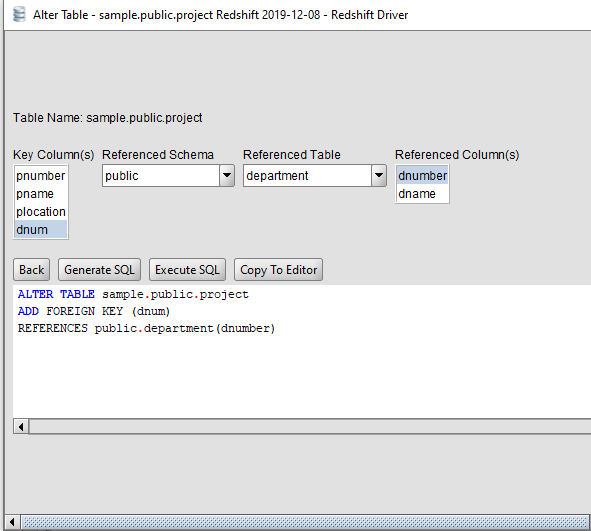
This form removes the target foreign table from the list of children of the specified parent table.

See the similar form of ALTER TABLE for more details. This form adds the target foreign table as a new child of the specified parent table. As oid system columns cannot be added anymore, this never has an effect. SET WITHOUT OIDSīackward compatibility syntax for removing the oid system column. These forms configure the firing of trigger(s) belonging to the foreign table. If IF EXISTS is specified and the constraint does not exist, no error is thrown. This form drops the specified constraint on a foreign table.

No action is taken to verify the constraint, but future queries will assume that it holds. This form marks as valid a constraint that was previously marked as NOT VALID. (See the discussion in CREATE FOREIGN TABLE.) If the constraint is marked NOT VALID, then it isn't assumed to hold, but is only recorded for possible future use. Unlike the case when adding a constraint to a regular table, nothing is done to verify the constraint is correct rather, this action simply declares that some new condition should be assumed to hold for all rows in the foreign table. Currently only CHECK constraints are supported. This form adds a new constraint to a foreign table, using the same syntax as CREATE FOREIGN TABLE. Note that the storage mode has no effect unless the table's foreign-data wrapper chooses to pay attention to it. This form sets the storage mode for a column. This form sets or resets per-attribute options. This form sets the per-column statistics-gathering target for subsequent ANALYZE operations. Mark a column as allowing, or not allowing, null values.
#POSTGRES ADD COLUMN WITH FOREIGN KEY UPDATE#
Default values only apply in subsequent INSERT or UPDATE commands they do not cause rows already in the table to change. These forms set or remove the default value for a column. Again, this has no effect on any underlying storage: this action simply changes the type that PostgreSQL believes the column to have.

This form changes the type of a column of a foreign table. If IF EXISTS is specified and the column does not exist, no error is thrown. You will need to say CASCADE if anything outside the table depends on the column for example, views. This form drops a column from a foreign table. Unlike the case when adding a column to a regular table, nothing happens to the underlying storage: this action simply declares that some new column is now accessible through the foreign table. This form adds a new column to the foreign table, using the same syntax as CREATE FOREIGN TABLE. SET SCHEMA new_schema where action is one of:ĪDD column_name data_type ]ĭROP column_name ĪLTER column_name TYPE data_type ĪLTER column_name SET DEFAULT expressionĪLTER column_name DROP DEFAULTĪLTER column_name


 0 kommentar(er)
0 kommentar(er)
